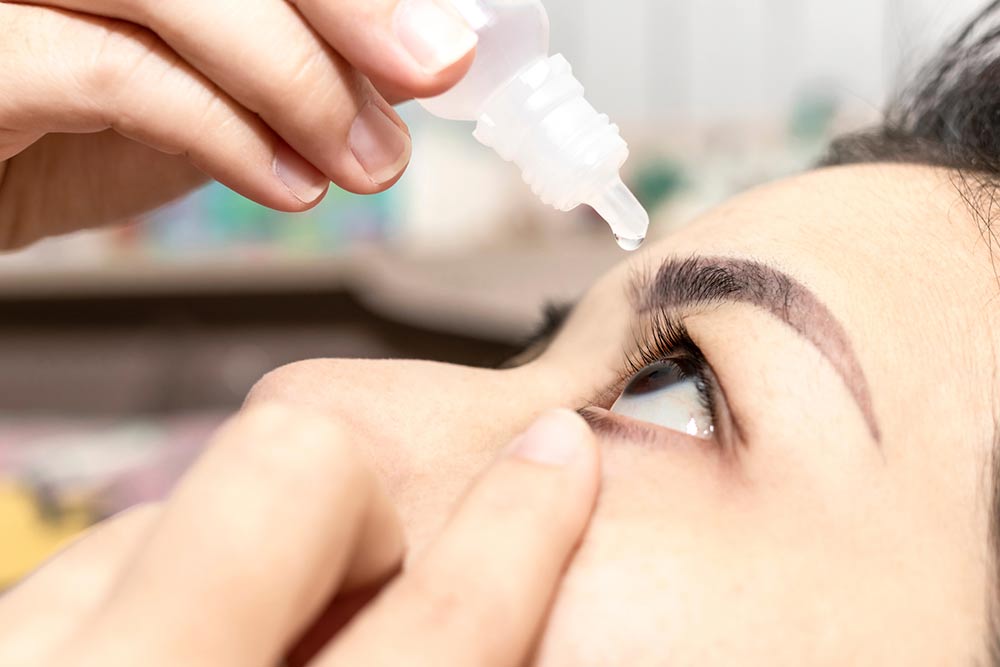6 common signs of thyroid eye disease

Often, one may notice some irritation and redness in the eyes, which is typically brought on by an allergic reaction, foreign substances entering the eyes, or excessively rubbing the eyes. In rare cases, it could indicate an underlying condition. For instance, thyroid eye disease is an autoimmune condition responsible for eye inflammation. So, one can watch out for the following common signs of the condition to seek an early diagnosis:
1. Red eyes
Thyroid eye disease can cause redness of the eyes, which is also one of the first signs of the condition. It is brought on by inflammation, swelling, and irritation of the thin coating, called conjunctiva, that covers the white portion of the eyes. As eyes can seem to be red due to reasons other than thyroid eye disease, it is common to ignore this symptom and delay medical intervention. However, if one notices persistently red eyes, they should consult a doctor and get a diagnosis.
2. Dry eyes
The increase in inflammation levels associated with thyroid eye disease can lead to a number of issues, including dry eyes and the feeling of grittiness in the region. Autoimmune thyroid conditions are known to result in dry eye syndrome at times. As a result, one may also experience some pain while trying to move their eyes. The most common mode of treatment to tackle the lack of moisture in the eyes is the use of artificial tears. These are eye drops or tear-mimicking solutions that can restore the lubrication in the eyes. Alternatively, some people with thyroid eye disease might even experience excessive production of tears in their eyes as a result of increased inflammation in the region. Dryness can also result in watery eyes as an attempt to deal with irritation of the eyes.
3. Swelling around the eyes
As thyroid eye disease leads to inflammation, the muscles and tissue around the eyes can puff up when inflamed. If one notices persistent swelling around the eyes, they should consult a doctor. Some prescription treatments can help reduce puffiness and swelling.
4. Bulging eyes
The bony part of the skull where the eyeballs sit is known as the orbit, which has muscles and fat cells that are connected to the eyeballs. When dealing with thyroid eye disease, the immune cells cause inflammation that makes the muscles, fat, and other tissue in this region expand, pushing the eyes forward and making the eyes bulge. This can make it difficult to close the eyes all the way, so bulging of the eyes also worsens dryness by exposing the eyes to more moisture loss. One should consult a doctor who can prescribe options to relieve swelling and bulging of the eyes.
5. Thyroid stare
This symptom is a result of bulging in the eyes. When the eyeballs are pushed forward, the eyelids can be pushed back. Further, the muscles that open and close the eyelids can become more restricted, leading to a phenomenon called the “thyroid stare”. Here, one may constantly look like they are staring. When one experiences this symptom, they can find it difficult to close their eyes due to the restricted movement of eyelids.
6. Double vision
Double vision, also known as diplopia, is another warning sign of thyroid eye disease. Here, the swelling can interfere with the function of the eyes. Further, the restriction of movement of the eyeballs and the eyelids can lead to one seeing dual images of a single object. This can be corrected with special eyeglasses. Sometimes, this symptom may require surgery.
Thyroid eye disease is associated with Graves’ disease, an autoimmune condition that leads to an overactive thyroid gland. So, if diagnosed with Graves’ disease, one may be able to watch out for thyroid eye disease symptoms in the months following the diagnosis. Upon noticing any of the warning signs, one should consult a doctor and get a proper diagnosis. The doctor can conduct an eye exam, blood tests, and imaging tests to confirm if the thyroid hormone levels and antibodies are higher than normal. Based on the results, the doctor will confirm if one is dealing with thyroid eye disease. They can then develop a treatment plan based on the severity of symptoms. Most symptoms can be treated with prescription options.









